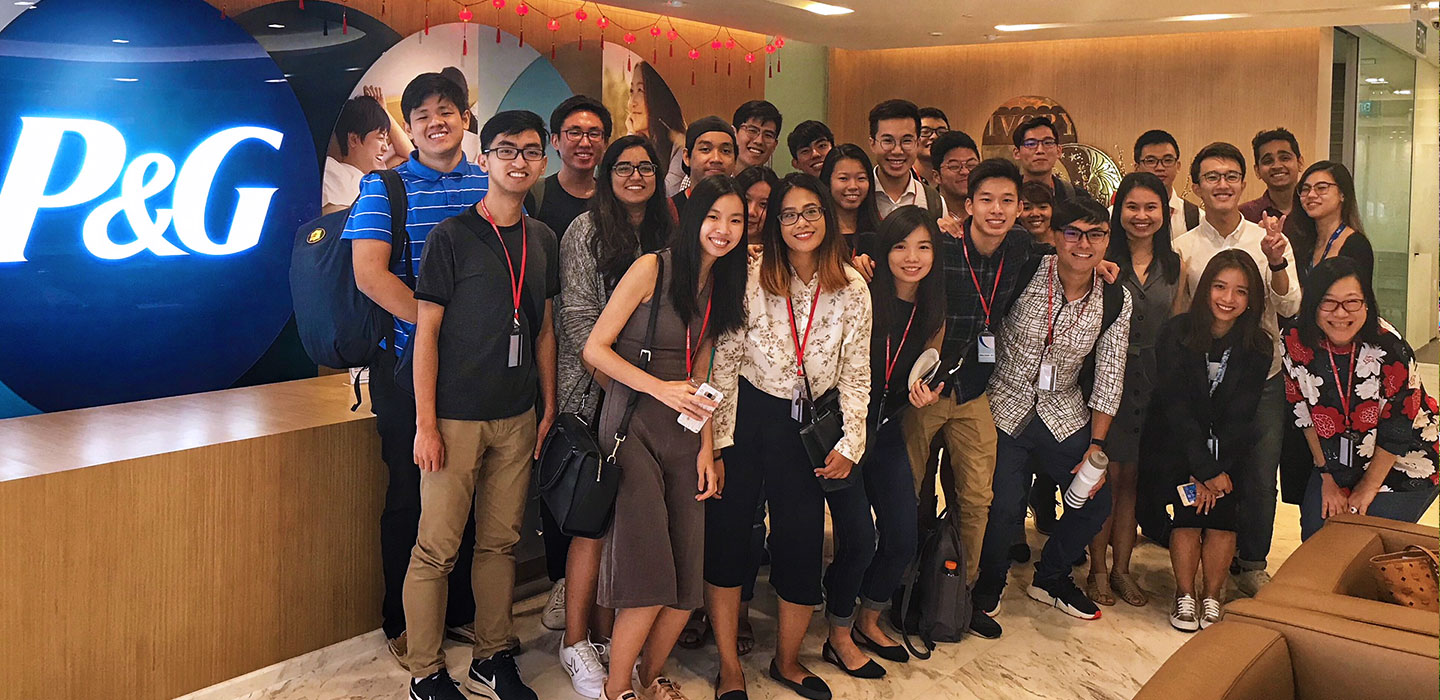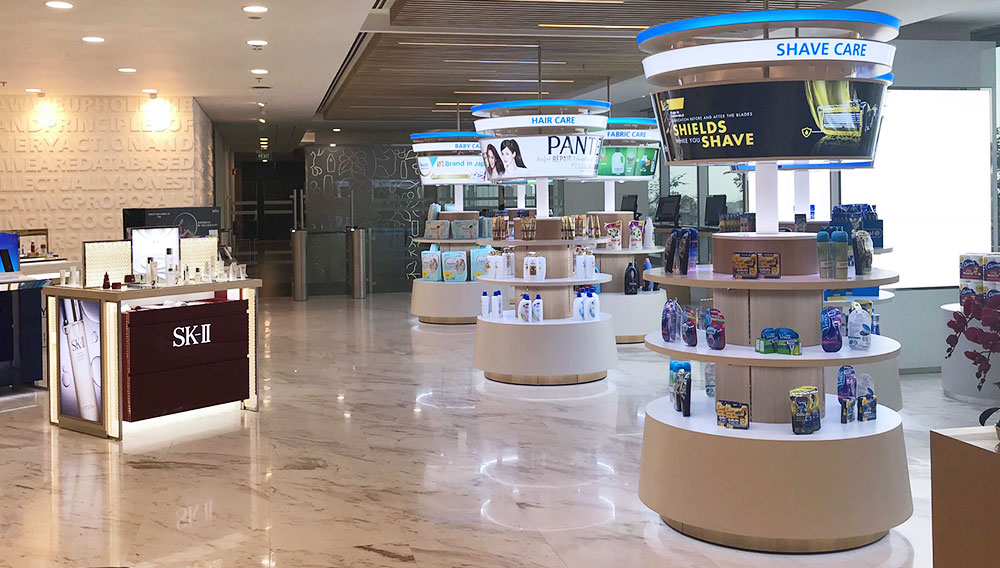Some 20 NUS BBA year 1 Marketing students spent an afternoon at Procter & Gamble’s (P&G) head office as part of their marketing module under Associate Professor Ang Swee Hoon.
Hosted by Marketing alumnus, Chong Wei Sheng, who is managing the digital marketing component for Head & Shoulders, students were treated to not just a tour around the premises, but also given insights on the hair care market in Asia Pacific.
The students had a chance to “shop” inside the P&G store that had displays of the various products available in Singapore, which are also available to P&G employees to purchase at discounted rates. Employees would just need to place their order and the products are delivered to their home.
Besides the walkabout, Wei Sheng also gathered five other NUS alumni in a mini panel discussion, where they shared their different work experiences at P&G. The common theme was the amount of knowledge and skills they’ve learnt from the get go at P&G despite the occasional steep learning curves. As brand managers, they are like owners of the brand and have to see that the brand grows. They also discussed the need to collaborate with various agencies to ensure that the brand message is well communicated.
Endi Asmira, also an NUS Business School alumnus and currently a APAC Regional Brand Manager at P&G, explained the rationale behind their new Head & Shoulders shampoo campaign and strategy in Thailand. They had recently launched a promotional campaign during the Songkran festival that focused on a new ingredient included into the shampoo – methanol, that provides a cooling sensation especially in Southeast Asia’s humid weather.
NUS BBA student Chloe Tan said, “Sharing examples of how the team executed their on-ground activation allowed me to see how a marketing campaign is used to promote a product and how the brand allowed potential consumers to try their shampoo during the Songkran festival. I thought that it was a really an innovative way to introduce their shampoo. Although it may seem like a simple form of promotion, it actually creates a memorable experience for people, as shown through the smiles of the participants. The impact of joy that campaigns have the potential to infect consumers with, is an aspect of marketing that I truly find fulfilling.”
“Besides, I really liked how the brand took the opportunity of the festival to showcase their product – when consumers are feeling sweaty from the hot sun, and they want to be clean. I felt that this was really relevant, and I could understand how the product actually relates to the activity and hence, reaching out to the right group of consumers.”
Endi also discussed the challenges they face when marketing to the Philippines. Shampooing practices vary from country and culture and in the case of the Philippines, Filipinos prefer buying sachets rather than bottles of shampoo because of affordability.
Questions followed fast and furious as students wanted to know how P&G decides which country to enter first when introducing a new product. They were also curious about the possibility of cannibalisation among the different P&G shampoos and how P&G tackles such challenges.
NUS BBA student Alain Chen said, “The visit broadened my insights into the world of brand management. I’ve realised the need to collaborate with different stakeholders such as the public relations agency and media agency is an important aspect of their daily work. They play essential roles in bringing a marketing campaign to fruition.”
Chloe added, “It was truly an experience. The highlights of the trip are clearly the first-hand interaction that we had with our alums. The simple sharing session allowed me to better understand the role of a marketer. Simply ‘googling’ the job scope of a brand manager will not have given me such in-depth insights about what they do on a daily basis. Furthermore, each person’s role also consisted more than the promotional aspect of keeping their product ‘fresh’ in the minds of their target audience.”
Other topics discussed included what happens to products that don’t do well, are price differentials for different shampoos justified by costs, what cultural idiosyncrasies account for differences in marketing strategies across Asian countries, and what are the differences between brand management and marketing.
Fun facts included how the Japanese and the Filipinos differ in water usage. Japanese are very water conscious as water is expensive there, and this affects conservative use of water for washing dishes. On the other hand, in the Philippines, water is relatively inexpensive. This difference translates into the different advertising concepts. In Japan, the message is on how one rinse is all it takes to remove the dish washing residue from dishes. In the Philippines, the advertisement shows heavy use of water in lathering and washing the dishes.
Another takeaway in Asia, especially in Japan and Korea, is the challenges P&G face when competing with local brands. Hence, P&G competitors are not just other MNCs but also formidable local brands that know the local market conditions and consumers very well.
NUS BBA student Foo Ce Ying said, “It was an insightful and fruitful session. My classmates and I had a variety of questions asked and answered. Speakers were enthusiastic in sharing their knowledge on brand marketing. It was great to be able to gain new insights which I have never come across before and definitely a joy to spend one of my afternoons at P&G!”
For more information on the NUS BBA programme, please visit bba.nus.edu.sg.





